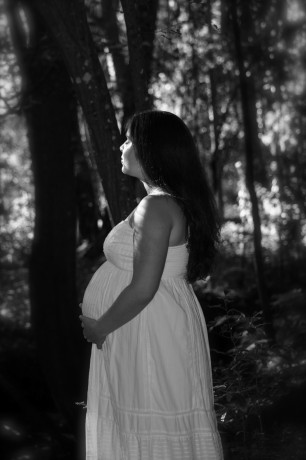
Obstetrics and Gynecology released this 10 year population based study of uterine rupture in October 2002.
Objective
To review the incidence, associated factors, methods of diagnosis, and maternal and perinatal morbidity and mortality associated with uterine rupture in one Canadian province.
Methods
Using a perinatal database, all cases of uterine rupture in the province of Nova Scotia for the 10‐year period 1988–1997 were identified and the maternal and perinatal mortality and morbidity reviewed in detail.
Results
Over the 10 years, there were 114,933 deliveries with 39 cases of uterine rupture: 18 complete and 21 incomplete (dehiscence).
Thirty‐six women had a previous cesarean delivery: 33 low transverse, two classic, one low vertical.
Of the 114,933 deliveries, 11,585 (10%) were in women with a previous cesarean delivery.
Uterine rupture in those undergoing a trial for vaginal delivery (4516) was complete rupture in 2.4 per 1000 and dehiscence in 2.4 per 1000.
There were no maternal deaths, and maternal morbidity was low in patients with dehiscence. In comparison, 44% of those with complete uterine rupture received blood transfusion (odds ratio 7.60, 95% confidence interval 1.14, 82.14, P = .025).
Two perinatal deaths were attributable to complete uterine rupture, one after previous cesarean delivery. Compared with dehiscence, infants born after uterine rupture had significantly lower 5‐minute Apgar scores (P < .001) and asphyxia, needing ventilation for more than 1 minute (P < .01).
Conclusion
In 92% of cases, uterine rupture was associated with previous cesarean delivery. Uterine dehiscence was associated with minimal maternal and perinatal morbidity. In contrast, complete uterine rupture was associated with significantly more maternal blood transfusion and neonatal asphyxia.
Summary
Out of 114,933 deliveries, there were 39 total ruptures (.o34%), with 36 of them having a previous cesarean. Complete ruptures counted for 18 of those (.016% chance of complete uterine rupture). No mother deaths.
2 infant deaths (2 0f 114,933 deliveries is a 0.0017%). One of the deaths the mother had a previous cesarean, one had no previous cesarean.
Uterine scar dehiscence is different than complete uterine rupture. Dehiscence is the separation of a preexisting scar that doesn’t disrupt uterine serosa and that does not significantly bleed from its edges. In addition, the fetus, placenta, and umbilical cord must be contained within the uterine cavity, without a need for cesarean delivery due to fetal distress.
Thank you Candice Young for the beautiful picture.
Thank you Emily Cicora for sharing the article.
Percentages calculated here.
For more info on uterine rupture rates and cesarean risks.
Other resources: Uterine Rupture in Pregnancy











11 Comments
Candice
Nicely presented!
Anna
Great post, I just wish these studies would separate out the mothers whos labors were augmented:(
Andrea
Good point, Anna. Also, I want to know what the statistics are for c-section maternal and infant death rates.
Marlene Waechter
It is important to anyone involved in a possible VBAC to know lots of other things too. What % were after induction or augmentation, either medical or herbal? What % had other co-morbidities that might have contributed? What % were with Docs, CNM’s, CPM’s, Other HCP’s or UC?
Oh, so many important factors that people tend to ignore!
Janie
much lower than they make women think.
2 questions I have – what were the interventions in the labors where rupture occurred and…
uterine rupture where there was no previous c-section – I never really thought of that happening – I’d love to know the circumstances there as well.
Nic Singleton
Next October it will have been another 10 years since this study was conducted. I am interested to see the numbers now-a-days with the c-section rates being higher. I also wish, though, that the numbers were presented in a way that explained whether or not the labors were augmented in anyway.
April
I would like to know: of the women that ruptured, how many of them were induced into labor or had labor augmented by Pitocin or the like. It’s a well known fact that induction causes harder, faster labors that put extream stress on the uterus.
Alex
I would also like to know how many of those 39 ruptures had Cytotec or Pitocin.
Kinsey Gensel
I would be interested to see the cesarean/repeat cesarean morbidity rates alongside this information. I also agree it would be helpful to know how many of the ruptures also had augmented labors.
Jessie Blalock
That the risk of uterine rupture was minuscule in women who had not previously had a cesarean suggests that the issues lies not with VBACs but with cesareans ever occurring in the first place. Not to discount that those non-cesarean related ruptures did happen, with one of the two non-cesarean related deliveries having fatal results. Bad things happen, but we can only prevent what we can predict – and I would predict based on this study that cesareans put mothers at risk during future births. Mothers should not be subjected to these kind of statistics simply because a doctor feels it necessary to emotionally manipulate women into accepting cesarean sections as a “safer choice” in the moment from a hospital based malpractice-fearing perspective.
Margaret
To previous commenters- if you view the entire journal article, it shows percentages of inductions, etc.